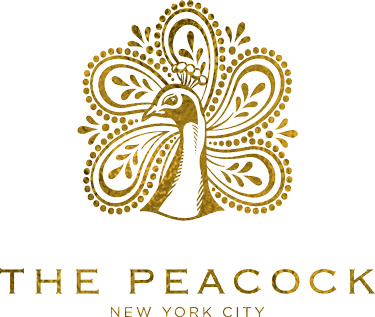The Peacock
 Tuesday, March 18, 2014 at 01:10PM
Tuesday, March 18, 2014 at 01:10PM  The Peacock strutted into town in late 2013, aiming to prove that British pub food is fit for fine dining.
The Peacock strutted into town in late 2013, aiming to prove that British pub food is fit for fine dining.
The British invasion is hardly big news any more: The Spotted Pig opened in 2003, and there have been many that followed, including Jones Wood Foundry on the Upper East Side, whose owners are also behind this new venture.
But these older places are fundamentally casual, reflecting the cuisine’s humble origins. The Peacock asks diners to contemplate $26 fish and chips in sumptuous rooms, alongside three-figure Bordeaux served by suited sommeliers.
We liked it, but I’m not sure it will last.
The two adjacent townhouses on a Murray Hill side street were formerly the Williams Club, one of many establishments that catered to affluent alumni of Northeast liberal arts colleges. It was a place where locals congregated with their fellow grads, where those not based in New York could find a place to stay. As the Wall Street Journal explained:
The demise of the university clubs comes not from economic recession or a dwindling population of grads but a change in leisure interests. Younger generations of men and women, for good or ill, seem to prefer boutique hotels to the gilded clubhouse. They perhaps don’t see as much prestige in drinking and dining in swanky clubs with their alma mater’s name, when they can just as easily stay in touch with college friends on Facebook.
(There are still a few of these around: the Harvard, Yale, and Princeton clubs are in no danger of disappearing.)
 The Williams site was acquired by restaurateur Yves Jadot, who converted it into a boutique extended-stay hotel (30 days minimum) called The William. There are two restaurants, The Peacock and a casual pub called The Shakespeare. Jadot’s other properties supplied the culinary talent, chef Jason Hicks of Jones Wood Foundry (who is listed as a co-owner), and Meghan Dorman of the speakeasy-style cocktail bar, Raines Law Room. Robert Aikens, formerly of Stephen Starr’s The Dandelion in Philadelphia, is executive chef.
The Williams site was acquired by restaurateur Yves Jadot, who converted it into a boutique extended-stay hotel (30 days minimum) called The William. There are two restaurants, The Peacock and a casual pub called The Shakespeare. Jadot’s other properties supplied the culinary talent, chef Jason Hicks of Jones Wood Foundry (who is listed as a co-owner), and Meghan Dorman of the speakeasy-style cocktail bar, Raines Law Room. Robert Aikens, formerly of Stephen Starr’s The Dandelion in Philadelphia, is executive chef.
 There are two lounges with wing-back chairs and plush sofas, where you can kick back on Dorman’s painterly cocktails. They’re over-priced at $16–18, and the pours are not generous, but you are paying for atmosphere. For dinner, you move onto one of two comfortable, dimly-lit dining rooms, where tables are generously spaced and you will not struggle to hear your companion. (See Eater’s photo essay for a look at the décor.)
There are two lounges with wing-back chairs and plush sofas, where you can kick back on Dorman’s painterly cocktails. They’re over-priced at $16–18, and the pours are not generous, but you are paying for atmosphere. For dinner, you move onto one of two comfortable, dimly-lit dining rooms, where tables are generously spaced and you will not struggle to hear your companion. (See Eater’s photo essay for a look at the décor.)
There are no tablecloths, but everything else about the place screams fine dining, and I don’t take issue with that. I just wonder about the viability of Gammon steak and bangers & mash in this setting. The quality of the cooking is better than most pubs, but it still feels like eating a pub menu at Per Se. Prices are not out of line, considering the elegance of the room and the skill of the cooking, with starters $11–18, mains $21–33, and sides $9.
The wine list (available online) runs to five pages, with a good range of selections below $60. A 2005 Château Ramafort was fairly priced at $55.
 Jason Hicks,
Jason Hicks,  Meghan Dorman,
Meghan Dorman,  Yves Jadot
Yves Jadot 

